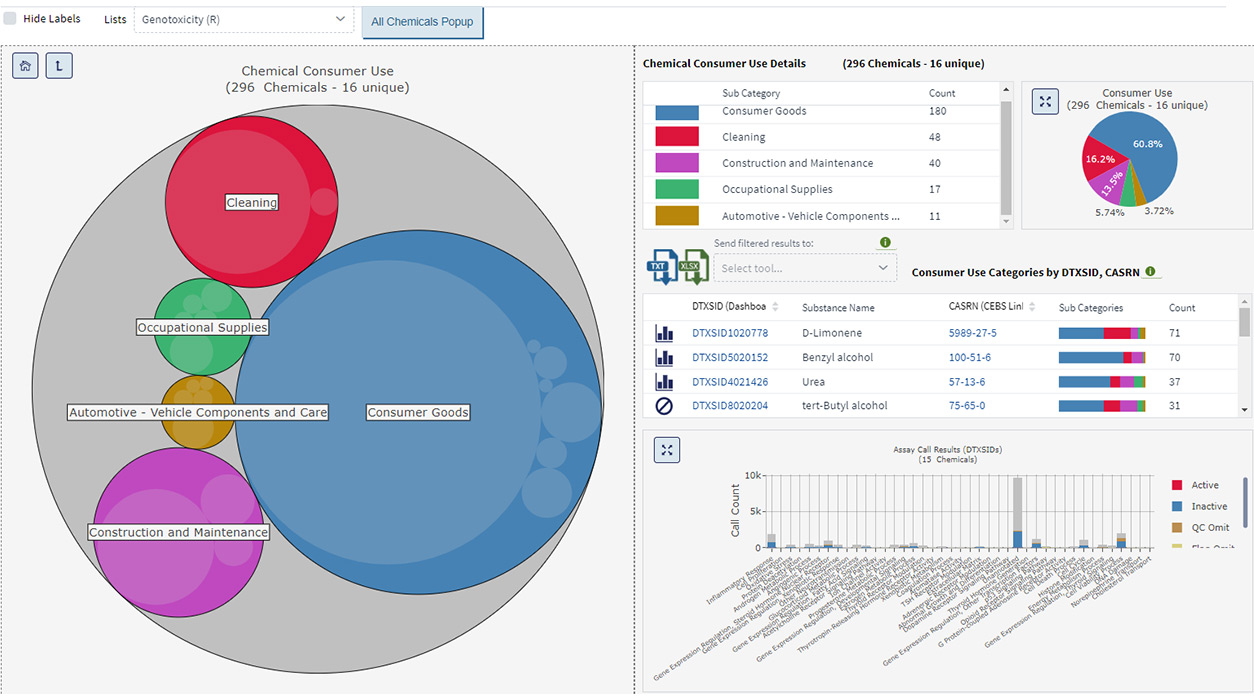NIEHS researchers at the National Toxicology Program (NTP) Interagency Center for the Evaluation of Alternative Toxicological Methods(https://ntp.niehs.nih.gov/pubhealth/evalatm/) (NICEATM) led an international project to build computational models to predict whether substances might be toxic when ingested. The project produced the Collaborative Acute Toxicity Modeling Suite (CATMoS), described in an article published April 30 in the NIEHS-affiliated journal Environmental Health Perspectives.
Using chemical properties and molecular structures to predict toxicity, scientists from 35 institutions — representing eight different countries — developed 139 predictive models. CATMoS combined them into what is called a consensus model, taking advantage of the strengths of each approach to improve prediction accuracy.
 All of Mansouri’s crowdsourcing projects were collaborations with scientists at the EPA Center for Computational Toxicology and Exposure. (Photo courtesy of Steve McCaw / NIEHS)
All of Mansouri’s crowdsourcing projects were collaborations with scientists at the EPA Center for Computational Toxicology and Exposure. (Photo courtesy of Steve McCaw / NIEHS)Benefits of crowdsourcing
Lead author Kamel Mansouri, Ph.D., from the NIEHS Division of the NTP, noted that CATMoS is the latest project to benefit from a crowdsourcing approach. Individual models may excel at predicting toxicity of certain types of chemicals, but no single approach provides accurate predictions for the entire chemical universe.
“Each of the nearly 50,000 chemicals in our set had a toxicity prediction generated for it by at least 10 models, each using a different algorithm,” he explained. “Combining the models to get a consensus prediction gave us a more accurate and comprehensive picture than what we could get from a single model.”
This was the third crowdsourcing project Mansouri has led. Previous projects also produced consensus models, called CERAPP and CoMPARA, that identify chemicals with potential to interact with the endocrine system. The U.S. Environmental Protection Agency (EPA) now uses CERAPP and CoMPARA to select and prioritize chemicals for testing in its Endocrine Disruptor Screening Program.
Regulatory focus will ensure use
From the start, CATMoS was developed with an eye toward how it could be applied to reduce or replace animal use for regulatory testing. “We started the project by asking regulatory agencies what endpoints they needed predictions for,” explained NICEATM Acting Director Nicole Kleinstreuer, Ph.D., senior author on the CATMoS paper. “This ensured that we would end up with a tool that would be used for regulatory applications.”
 “EPA and other regulatory agencies have set goals to reduce or eliminate animal use for acute toxicity testing,” noted Kleinstreuer. “NICEATM is helping them do that.” (Photo courtesy of Steve McCaw / NIEHS)
“EPA and other regulatory agencies have set goals to reduce or eliminate animal use for acute toxicity testing,” noted Kleinstreuer. “NICEATM is helping them do that.” (Photo courtesy of Steve McCaw / NIEHS)These objectives were discussed at a 2018 workshop organized by NICEATM. The set of chemicals used in CATMoS included those nominated by regulatory agencies.
In line with their requests, CATMoS identifies chemicals that are likely to be either very toxic or nontoxic. It can predict how a chemical might be classified according to the two different hazard classification systems used to determine the messages in chemical hazard labeling. CATMoS can also generate a numerical estimate of toxicity.
Inhalation toxicity next
CATMoS predicts how toxic a chemical could be when ingested, but EPA and other regulatory agencies also need to know how toxic a chemical might be when inhaled. That will be the focus of the next NICEATM crowdsourcing project.
CATMoS toxicity predictions are available in the recently updated Integrated Chemical Environment (see sidebar) and will be available via the EPA CompTox Chemicals Dashboard. Users who would like to generate CATMoS toxicity predictions of their own chemicals can do so by using the Open Structure-activity/property Relationship App(https://ntp.niehs.nih.gov/go/opera), or OPERA.
Mansouri K, Abdelaziz A, Rybacka A, Roncaglioni A, Tropsha A, Varnek A, Zakharov A, Worth A, Richard AM, Grulke CM, Trisciuzzi D, Fourches D, Horvath D, Benfenati E, Muratov E, Wedebye EB, Grisoni F, Mangiatordi GF, Incisivo GM, Hong H, Ng HW, Tetko IV, Balabin I, Kancherla J, Shen J, Burton J, Nicklaus M, Cassotti M, Nikolov NG, Nicolotti O, Andersson PL, Zang Q, Politi R, Beger RD, Todeschini R, Huang R, Farag S, Rosenberg SA, Slavov S, Hu X, Judson RS. 2016. CERAPP: Collaborative Estrogen Receptor Activity Prediction Project. Environ Health Perspect 124(7):1023–1033.
Mansouri K, Kleinstreuer N, Abdelaziz AM, Alberga D, Alves VM, Andersson PL, Andrade CH, Bai F, Balabin I, Ballabio D, Benfenati E, Bhhatarai B, Boyer S, Chen J, Consonni V, Farag S, Fourches D, Garcia-Sosa AT, Gramatica P, Grisoni F, Grulke CM, Hong H, Horvath D, Hu X, Huang R, Jeliazkova N, Li J, Li X, Liu H, Manganelli S, Mangiatordi GF, Maran U, Marcou G, Martin T, Muratov E, Nguyen DT, Nicolotti O, Nikolov NG, Norinder U, Papa E, Petitjean M, Piir G, Pogodin P, Poroikov V, Qiao X, Richard AM, Roncaglioni A, Ruiz P, Rupakheti C, Sakkiah S, Sangion A, Schramm KW, Selvaraj C, Shah I, Sild S, Sun L, Taboureau O, Tang Y, Tetko IV, Todeschini R, Tong W, Trisciuzzi D, Tropsha A, Van Den Driessche G, Varnek A, Wang Z, Wedebye EB, Williams AJ, Xie H, Zakharov AV, Zheng Z, Judson RS. 2020. CoMPARA: Collaborative Modeling Project for Androgen Receptor Activity. Environ Health Perspect 128(2):27002.
(Catherine Sprankle is a communications specialist for ILS, the contractor supporting NICEATM.)

The ICE Search tool (see sidebar) now provides graphs and diagrams showing details of query results for each substance. (Image courtesy of NIEHS)

The Consumer Use Explorer (see sidebar) feature of the ICE Chemical Characterization tool lets users view how members of a list of chemicals might be used. (Image courtesy of NIEHS)









